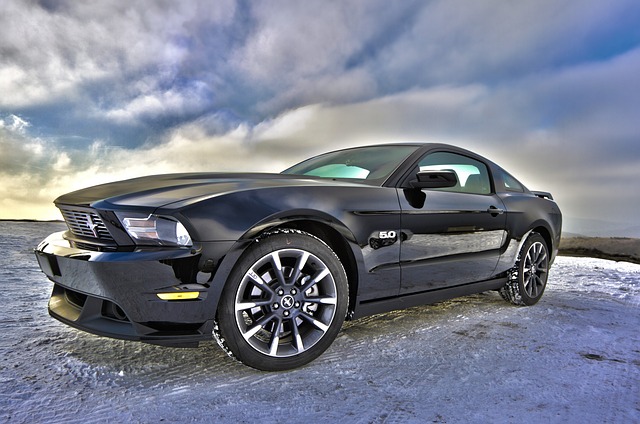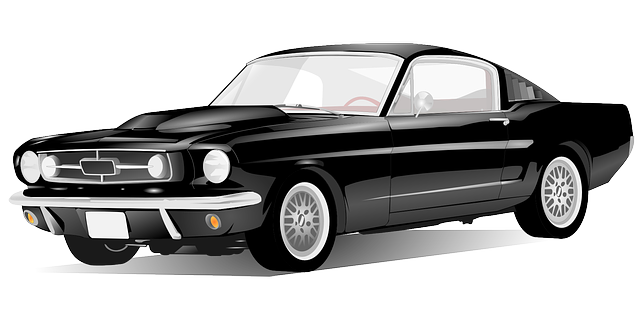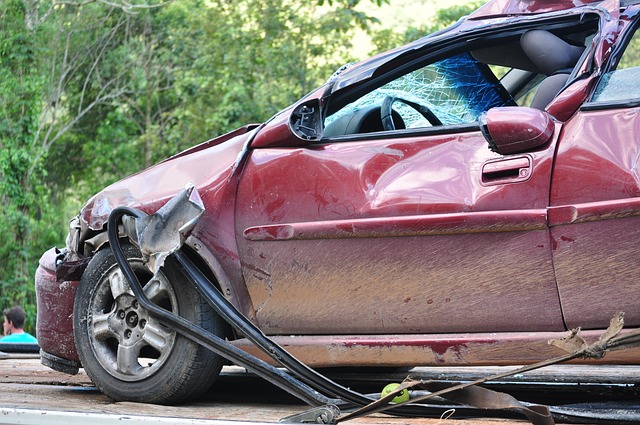Comprehensive car insurance offers protection against a wide range of unforeseen events beyond collisions, including theft, vandalism, natural disasters, and accidental damage. It provides peace of mind by covering vehicle repair/replacement costs and offers perks like roadside assistance and rental car coverage. Understanding what's covered, reviewing deductibles, and tailoring the policy to individual needs is crucial for maximizing protection while balancing cost and peace of mind. Remember, comprehensive insurance doesn't cover all damages (e.g., regular wear & tear) and its optional; assess your driving habits and existing coverage before deciding.
Understanding comprehensive car coverage is essential for every driver. This article guides you through the intricacies of what comprehensive car insurance covers, dispelling common myths and clarifying key terms. From defining comprehensive coverage and understanding types of damage, to exploring deductibles and additional benefits, we unravel the basics and beyond. Learn when comprehensive kicks in, and discover how to choose the right plan for personalized protection on the road.
Unraveling Comprehensive Car Insurance: What You Need to Know

Comprehensive car insurance, often an afterthought for many drivers, is actually a crucial safety net that provides broad protection against unforeseen events. Unlike liability insurance, which covers damages you cause to others, comprehensive coverage shields you from financial burdens arising from specific incidents.
So, what does comprehensive car insurance cover? In essence, it pays for repairs or replacements to your vehicle if it’s stolen, damaged in a collision (not involving another vehicle), or becomes the victim of acts of vandalism, natural disasters, or even wildlife encounters. This type of coverage is a game-changer, offering peace of mind and financial security when unexpected events threaten your mobility and investment in a vehicle.
Defining Comprehensive Coverage: A Detailed Breakdown

Comprehensive car coverage, often referred to as full coverage insurance, is a type of auto policy that provides protection against various risks beyond the standard requirements. It goes above and beyond the typical liability and collision coverage by including additional benefits designed to safeguard drivers from unexpected events. When you have comprehensive car insurance, you’re essentially shielded from a wide range of potential financial burdens related to your vehicle.
This type of coverage typically encompasses a broad spectrum of perils, such as theft, vandalism, natural disasters (including floods and earthquakes), and even damage caused by falling objects. It also usually includes coverage for medical expenses if you or your passengers are injured in an accident, regardless of fault. Furthermore, comprehensive insurance can compensate for the cost of repairing or replacing your vehicle if it’s damaged or totaled due to covered events, offering peace of mind behind the wheel.
Types of Damage: Understanding What's Included

Comprehensive car insurance, often referred to as ‘comprehensive cover’, offers protection against a wide range of potential damages beyond what standard liability policies provide. When you purchase comprehensive coverage, you’re essentially insuring your vehicle against various non-collision related incidents. This includes damage from natural disasters like floods, wildfires, or severe weather conditions. It also covers theft, vandalism, and even accidental damage caused by rolling over or hitting fixed objects.
Understanding what’s included in comprehensive car insurance is crucial when deciding on vehicle protection. This type of coverage goes beyond the typical ‘at-fault’ basis of liability policies. It protects you from financial loss due to events that might be unforeseen or out of your control. From broken windshields to stolen parts, comprehensive insurance ensures peace of mind knowing that unexpected damages won’t leave you with a substantial repair bill.
The Role of Third-Party Liability in Comprehensive Policy

Third-party liability is a key component of comprehensive car insurance, providing protection against claims made by others for damages or injuries resulting from a traffic accident involving your vehicle. This coverage is essential, as it shields policyholders from significant financial burdens that could arise from legal proceedings and settlements. When you have third-party liability included in your comprehensive policy, it ensures that your insurance company will step in and cover the costs on your behalf if you’re found liable for an accident.
Understanding what does comprehensive car insurance cover is crucial. Beyond third-party liability, this type of policy typically includes coverage for damage to your own vehicle, such as repairs or replacement due to accidents, theft, or natural disasters. It also often extends protection to personal belongings stored in your car and offers financial assistance if you’re sued over an accident caused by your negligence. Comprehensive insurance is designed to provide peace of mind and ensure that policyholders are protected against a wide range of potential risks while on the road.
When Does Comprehensive Kick In? Scenarios and Exceptions

Comprehensive car insurance, also known as ‘all risks’ coverage, kicks in when your vehicle experiences damage that isn’t caused by a collision with another object or entity. This includes instances like theft, vandalism, natural disasters (such as floods or hail storms), and even accidental damage.
However, there are exceptions. Comprehensive policies generally do not cover wear and tear, regular maintenance issues, or damage caused by driving under the influence. Additionally, certain high-risk activities or vehicles may be excluded, so it’s important to review your policy details carefully. What does comprehensive car insurance cover? In essence, it provides protection for a wide range of unforeseen events that could render your vehicle unusable, giving you peace of mind on the road.
Deductibles Explained: How They Impact Your Claims

Deductibles, often referred to as ‘depreciation amounts’, are a crucial aspect of comprehensive car insurance policies. They represent the out-of-pocket expense you agree to pay when making a claim. The key is to understand how they impact your claims process and financial burden. When a covered incident occurs, such as an accident or vandalism, your deductible acts as a threshold. You’ll only receive compensation for damages exceeding this amount.
Choosing a lower deductible means you’ll pay less out of pocket in the event of a claim but may result in higher premium costs. Conversely, opting for a higher deductible can decrease your monthly payments but require a larger personal contribution during claims. Thus, when considering what does comprehensive car insurance cover, understanding deductibles is vital to balancing cost and peace of mind.
Additional Benefits: Features Beyond the Basics

Comprehensive car insurance goes beyond the standard coverage by offering additional benefits that protect drivers from a wide range of risks. Unlike liability insurance which primarily covers damages caused to others, comprehensive insurance safeguards your vehicle against various perils such as theft, vandalism, natural disasters, and even accidental damage. This means if your car is damaged or stolen, you’re covered for the repair or replacement costs up to the policy limits.
Beyond these core features, many comprehensive car insurance policies include perks like roadside assistance, rental car coverage during repairs, and even protection against mechanical breakdowns. Some providers also offer benefits like legal expenses coverage, which can help defray the costs of legal defense if you’re involved in a lawsuit related to an accident. Understanding these additional benefits can help drivers make informed decisions when choosing their comprehensive car insurance policy, ensuring they get the most out of their investment.
Choosing the Right Plan: Factors to Consider for Personalized Coverage

When selecting a comprehensive car coverage plan, several factors come into play to ensure you get personalized protection aligned with your unique needs. Start by evaluating your vehicle’s make and model, as some cars are more prone to specific types of damage or theft, influencing coverage requirements. Consider also your driving history; if you’re a safe driver with no accidents or violations, insurers may offer competitive rates. Understand your personal risk profile; do you live in an area prone to natural disasters like floods or earthquakes? This can significantly impact coverage needs.
Moreover, assess the value of your vehicle and the types of situations you frequently encounter on the road. If you often drive in congested urban areas, comprehensive insurance may cover additional risks like vandalism or car jacking. Similarly, if you frequently transport valuable goods, specific coverage for cargo protection could be necessary. What does comprehensive car insurance cover? It typically includes protection against a wide range of incidents beyond typical collision and liability, such as theft, natural disasters, and damage from hazardous conditions, ensuring you’re prepared for the unexpected.
Myths Debunked: Clarifying Common Misconceptions About Comprehensive Insurance

Many drivers have misconceptions about comprehensive car insurance, often labeled as “comprehensive” or “full coverage.” Let’s clarify some common myths to ensure you understand what this type of coverage entails. One mistaken belief is that comprehensive insurance covers all damages to your vehicle. While it does provide protection against non-collision related incidents like theft, vandalism, natural disasters, and animal-related accidents, it does not usually include regular wear and tear or accidental damage from driving mistakes.
Another myth is that comprehensive insurance is always necessary. The truth is, it’s optional in many places and may not be the best fit for everyone. It’s crucial to evaluate your driving habits, vehicle condition, and existing coverage before deciding. Comprehensive insurance provides peace of mind and extra protection, but at an additional cost. Understanding what it does and doesn’t cover can help drivers make informed decisions regarding their automotive coverage needs.
